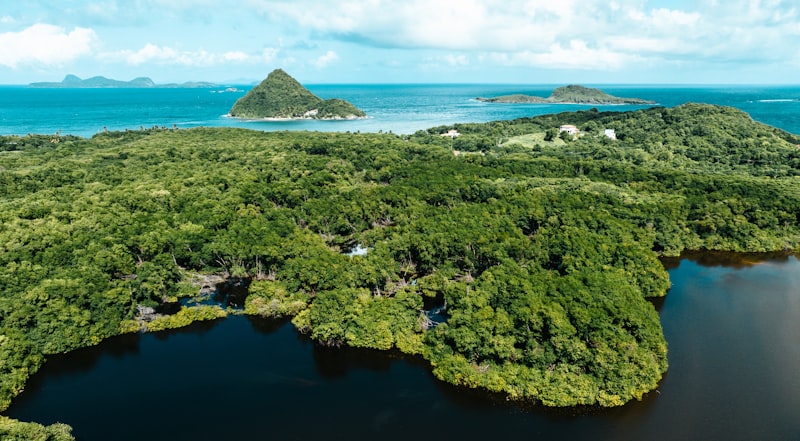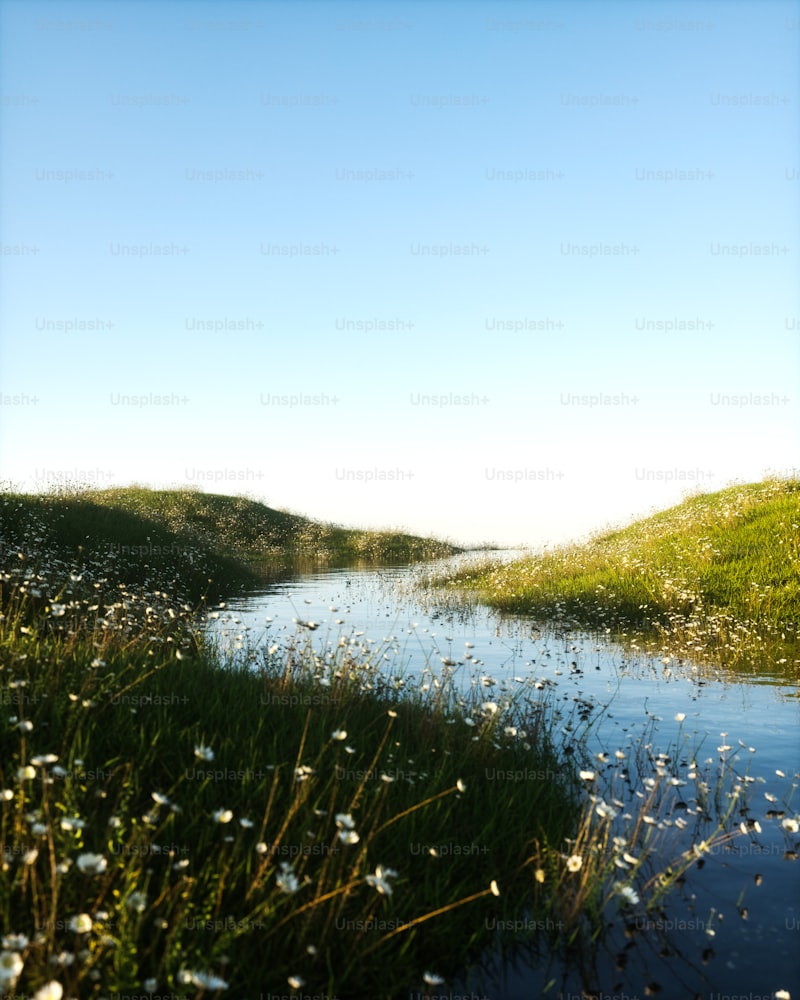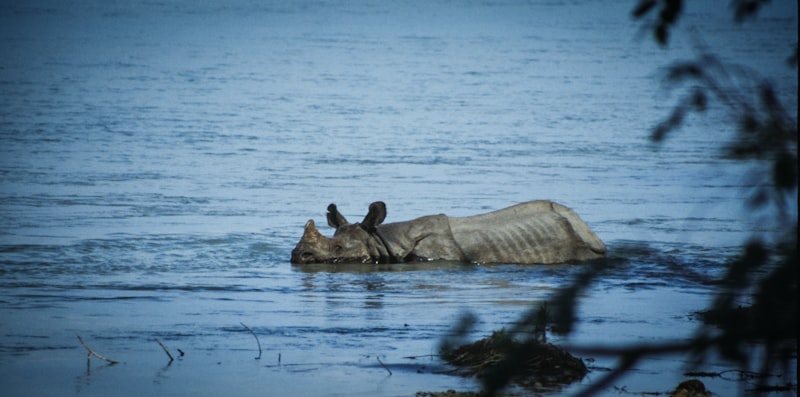
Why are wetlands so important for biodiversity? Let’s dive in. Firstly, wetlands act as natural sponges, soaking up excess water during floods and slowly releasing it during dry spells. This ability to regulate water levels helps to maintain nearby habitats, such as forests and grasslands, which depend on consistent water availability.
Moreover, wetlands are biodiversity hotspots. They provide a diverse array of microhabitats that cater to a wide range of species. From the dense roots of aquatic plants that shelter fish and amphibians to the tall grasses that offer nesting sites for birds, wetlands host a staggering variety of life forms. Even the mud and sediments in wetlands are teeming with microscopic organisms that form the base of the food chain.
In addition to supporting resident species, wetlands also serve as crucial stopover points for migratory birds. Picture a bird flying thousands of miles during migration season. Wetlands provide a safe haven where these birds can rest, refuel, and prepare for the next leg of their journey. Without these resting spots, many species would struggle to complete their epic migrations.

Furthermore, wetlands contribute to water purification. As water flows through wetlands, plants and microbes filter out pollutants and excess nutrients, improving water quality downstream. This natural filtration system is not only cost-effective but also sustainable, benefiting both wildlife and human communities that rely on clean water.
Ecosystem Lifelines: How Wetlands Sustain Global Biodiversity
Wetlands, often overlooked gems of our planet, play a crucial role in supporting biodiversity worldwide. These ecosystems, characterized by their unique water regimes, host a rich tapestry of life that thrives in both aquatic and terrestrial environments. Imagine them as nature’s multitaskers, providing essential services that benefit countless species, including humans.
One of the primary roles of wetlands is their capacity to act as natural filters. They purify water by trapping pollutants and sediment, ensuring cleaner downstream water for both wildlife and human communities. This purification process not only supports aquatic life but also safeguards human health by ensuring access to clean drinking water.
Beyond their water-cleansing abilities, wetlands are biodiversity hotspots. They serve as nurseries for fish and other aquatic species, providing shelter and food during critical stages of their life cycles. Moreover, many migratory birds rely on wetlands as rest stops during their long journeys, highlighting the global significance of these habitats in maintaining avian populations.
In addition to their biological diversity, wetlands offer resilience against climate change impacts. They act as carbon sinks, absorbing carbon dioxide from the atmosphere and storing it in their soils. This natural carbon sequestration helps mitigate climate change by reducing greenhouse gas concentrations in the air.
However, despite their ecological importance, wetlands face numerous threats. Habitat destruction, pollution, and unsustainable development practices jeopardize these vital ecosystems. Conservation efforts are crucial to safeguarding wetlands and ensuring their continued ability to support global biodiversity.
Wetlands are not merely stagnant bodies of water; they are dynamic ecosystems that provide invaluable services to both nature and society. By protecting and restoring these natural lifelines, we can secure a sustainable future where biodiversity thrives, and ecosystems flourish.
Unveiling Nature’s Guardians: Wetlands and Their Crucial Role in Biodiversity
Wetlands, often overlooked gems of our natural landscapes, play a pivotal role in safeguarding biodiversity. These ecosystems, characterized by their unique blend of water and land, serve as nature’s guardians, offering invaluable services to both wildlife and humans alike.
Imagine wetlands as nature’s intricate filtration systems. They purify water by trapping sediments and filtering out pollutants, ensuring cleaner and healthier waterways. This cleansing ability not only benefits aquatic life but also supports communities that rely on wetlands for freshwater supply.
Beyond water purification, wetlands are biodiversity hotspots. Their diverse habitats provide shelter, breeding grounds, and food sources for countless species of plants, animals, and microorganisms. From migratory birds to rare amphibians, wetlands host a wealth of life that depends on their existence.
Metaphorically, wetlands can be seen as nature’s safety nets. They absorb excess water during storms, mitigating floods and erosion in surrounding areas. This buffering capacity helps protect coastal regions from the ravages of hurricanes and tsunamis, showcasing their vital role in climate resilience.
Rhetorically, can we afford to lose these natural guardians? As human activities encroach upon wetlands through drainage, pollution, and development, we jeopardize their ability to sustain biodiversity and protect our planet. Preserving and restoring wetlands isn’t just an environmental choice—it’s a necessity for our own survival.
Wetlands are not merely stagnant patches of water; they are dynamic ecosystems that deserve our admiration and protection. By understanding their crucial role in biodiversity conservation and ecosystem services, we can work towards ensuring a sustainable future where wetlands continue to thrive as nature’s guardians.
Beyond Water: Wetlands as Crucibles of Life and Diversity
Imagine walking through a wetland. The air is alive with the calls of birds, the buzzing of insects, and the gentle rustling of plants. It’s a symphony of life where every component plays a vital role. Wetlands are like nature’s own mixing bowl, blending together water, soil, sunlight, and nutrients to create a perfect recipe for life to flourish.

These ecosystems are incredibly diverse, hosting a variety of species specially adapted to their unique conditions. From the majestic waterfowl that nest in the reeds to the microscopic algae that carpet the surface, every niche is filled with organisms finely tuned to their wetland home. It’s a bustling community where interactions between species create a delicate balance, ensuring the ecosystem’s resilience.
Moreover, wetlands act as nature’s filters. They purify and recharge our water sources, trapping pollutants and sediment before they can reach downstream environments. In this way, they act as both guardians of water quality and buffers against floods and droughts, providing invaluable ecosystem services that benefit both wildlife and human communities alike.
Yet, despite their importance, wetlands face numerous threats. Urban development, agriculture, and climate change pose significant risks to these delicate ecosystems. As we continue to alter our landscapes, preserving and restoring wetlands becomes increasingly crucial in safeguarding biodiversity and securing our planet’s future.
Wetlands: Vital Sanctuaries for Endangered Species
Imagine a world where nature’s resilience meets endangered species’ last refuge – that’s the wonder of wetlands. These ecosystems, characterized by their unique blend of water and land, play an indispensable role in safeguarding our planet’s biodiversity. They are not just ordinary landscapes; they are crucial sanctuaries where endangered species find solace and survival.
Why are wetlands so pivotal? Picture them as nature’s multitaskers. They act as natural filters, purifying water and maintaining its quality. As buffers against floods and storms, they protect nearby communities from nature’s wrath. But perhaps their most precious role lies in providing a haven for endangered flora and fauna.
For species on the brink of extinction, wetlands offer a lifeline. Take, for instance, the majestic Siberian crane or the elusive Bornean orangutan. These creatures depend on wetlands for nesting grounds, food sources, and migration routes. Without these habitats, their survival would be in jeopardy.
What makes wetlands such ideal habitats? It’s their diversity. From marshes and swamps to bogs and mangroves, each type hosts its own specialized species. Mangroves, with their tangled roots submerged in coastal waters, are nurseries for fish and shield against coastal erosion. Meanwhile, inland marshes provide breeding grounds for amphibians and waterfowl, ensuring their populations thrive.
Yet, despite their ecological importance, wetlands face threats. Urbanization, agriculture, and pollution encroach upon these delicate ecosystems, endangering both the habitats and the species they support. Conservation efforts are crucial to preserve these vital sanctuaries for future generations.
Biodiversity Hotspots: The Unsung Heroes of Wetlands
Picture this: a tranquil marshland, teeming with life. Here, countless species of plants, birds, fish, and insects intermingle in a delicate dance of survival and adaptation. It’s not just about the serene beauty of these wetlands; it’s about the vital services they provide to our planet.
Wetlands act as nature’s purifiers, filtering out pollutants and improving water quality. They serve as natural sponges during floods, absorbing excess water and mitigating the impacts of storms. In essence, they are nature’s guardians, silently protecting coastlines from erosion and providing a fertile ground for diverse flora and fauna to flourish.
But what makes certain wetlands biodiversity hotspots? It’s their unique combination of factors: geographic location, climate conditions, and evolutionary history. These elements converge to create niches that support a multitude of specialized species found nowhere else on Earth. Imagine it as a grand banquet where each species has its own role and place, contributing to the richness and resilience of the ecosystem.
Take the Amazon Basin, for example. Its vast network of rivers, lakes, and floodplains harbors an astonishing variety of life, from the iconic jaguar prowling the forests to the elusive pink river dolphin navigating murky waters. Every species, no matter how small or inconspicuous, plays a crucial part in maintaining the balance of this intricate web of life.
Preserving Precious Diversity: Wetlands’ Impact on Global Ecosystems
Imagine wetlands as nature’s sponges, absorbing excess rainwater and runoff like a sponge soaking up a spill. This ability helps in flood control, preventing nearby communities from facing the wrath of flash floods. By acting as natural buffers, wetlands protect both wildlife and human settlements from the devastating impact of storms and rising waters.
Beyond their role in water management, wetlands are biodiversity hotspots. They provide a home for countless species of plants and animals, some of which are found nowhere else on Earth. Picture a bustling community where birds nest, fish spawn, and insects thrive — all within the tranquil confines of a wetland. These areas are not just habitats; they are cradles of life, nurturing diverse ecosystems that contribute to the overall health of our planet.
Moreover, wetlands are carbon warriors in the fight against climate change. They store vast amounts of carbon dioxide, locking it away in their soils and vegetation. This helps to mitigate the effects of greenhouse gases, playing a critical role in regulating Earth’s climate systems.
But like many natural wonders, wetlands face threats from human activities. Urban development, agriculture, and pollution all pose challenges to these fragile ecosystems. As we encroach upon wetlands, we disrupt their delicate balance, endangering the species that rely on them and compromising their ability to perform essential ecological functions.
Frequently Asked Questions
What makes wetlands important for biodiversity?
Wetlands are crucial for biodiversity due to their unique ecosystems that support a wide variety of plants, animals, and microorganisms. They serve as habitats for numerous species, including migratory birds, amphibians, and fish. Additionally, wetlands contribute to water purification, flood control, and carbon storage, making them essential for maintaining ecological balance and supporting sustainable development.
How can wetland conservation efforts enhance biodiversity?
Discover how wetland conservation efforts support biodiversity by preserving critical habitats for diverse plant and animal species, ensuring ecological balance and resilience.
What are the environmental benefits of preserving wetlands?
Discover the environmental benefits of preserving wetlands with this concise FAQ. Learn how wetlands act as natural filters, improving water quality and mitigating floods. Explore their role in biodiversity conservation, supporting diverse plant and animal species. Understand their carbon sequestration capacity, crucial for climate change mitigation. Discover why preserving wetlands is essential for sustainable development and ecological balance.
Why are wetlands crucial habitats for wildlife?
Wetlands are vital habitats for wildlife due to their unique ecosystem services. They provide essential breeding grounds, food sources, and shelter for numerous species. Wetlands also play a crucial role in maintaining biodiversity and regulating water quality. Their ability to absorb and store excess water helps mitigate floods and erosion, making them indispensable for both wildlife and human communities.
How do wetlands support diverse ecosystems?
Discover how wetlands support diverse ecosystems by providing critical habitats for a wide variety of plants and animals. These unique environments help regulate water flow, improve water quality, and play a vital role in maintaining biodiversity.


